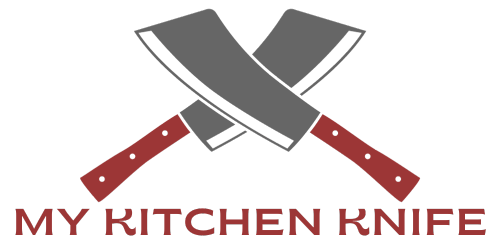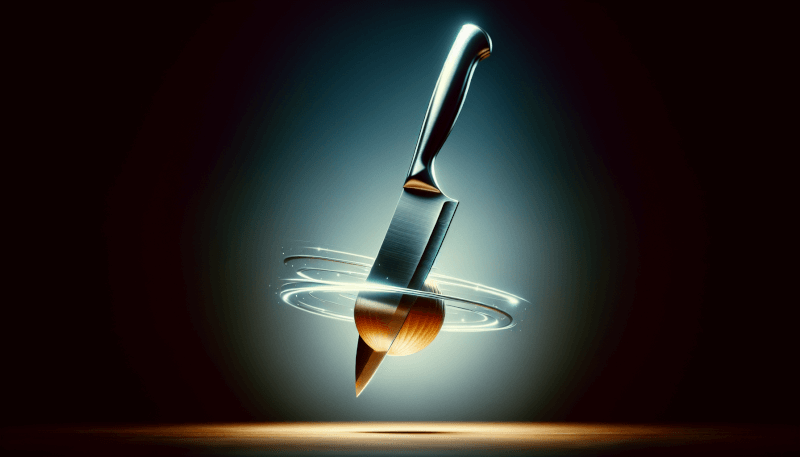When it comes to preparing meals, precision is key. Whether you’re chopping vegetables with finesse or mincing herbs with accuracy, having the right kitchen knives can make all the difference. In this article, you will discover the best kitchen knives specifically designed for precision chopping and mincing. With their sharp blades and ergonomic handles, these knives will elevate your cooking experience and help you achieve the perfect cuts every time. Say goodbye to uneven slices and hello to culinary excellence. Let’s explore the world of precision chopping and mincing together!
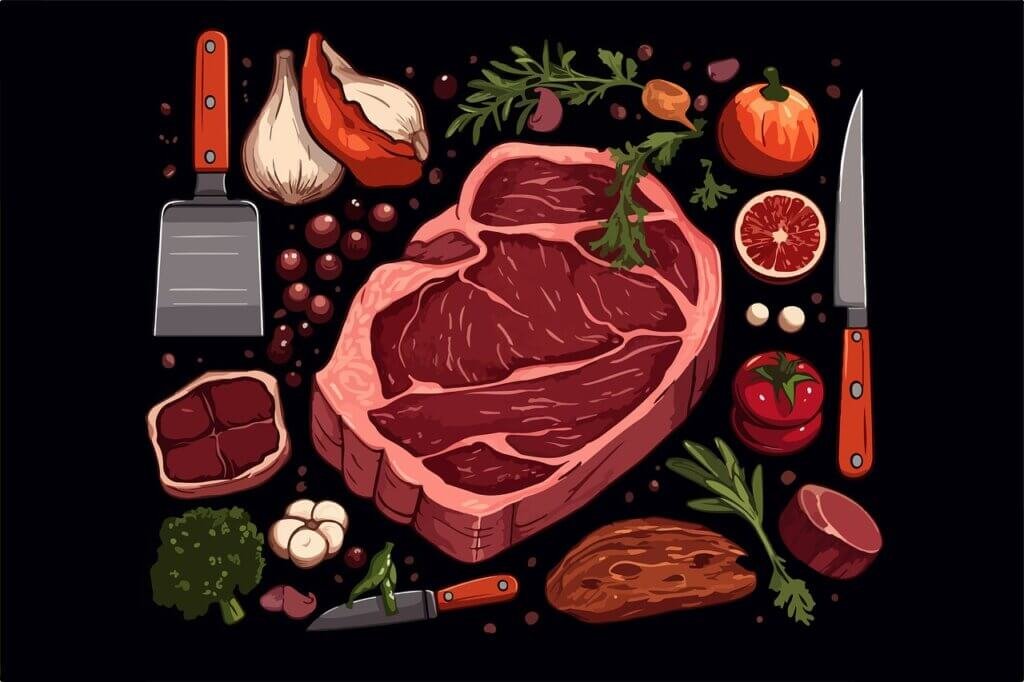
Types of Kitchen Knives
Chef’s Knife
The chef’s knife is a versatile and essential tool in any kitchen. It typically features a wide, sharp blade that tapers to a point, allowing for various cutting techniques. With its heft and sturdy construction, the chef’s knife excels at tasks like chopping, slicing, and dicing fruits, vegetables, meat, and herbs.
Santoku Knife
Originating from Japan, the Santoku knife has gained popularity worldwide for its excellent chopping, slicing, and mincing capabilities. This knife features a wider blade and a straighter edge compared to the chef’s knife, making it ideal for precise and controlled cuts. The Santoku knife is perfect for tasks like slicing thin cuts of fish, mincing garlic and ginger, and creating fine, even julienne strips.
Paring Knife
A paring knife is a small, handy knife with a narrow, pointed blade. Its compact size makes it ideal for intricate tasks such as peeling, trimming, and shaping fruits and vegetables. This knife is also perfect for delicate jobs like hulling strawberries, deveining shrimp, and removing seeds from chilies.
Utility Knife
The utility knife is an all-purpose knife that bridges the gap between a chef’s knife and a paring knife. It typically has a medium-sized blade that is narrower than a chef’s knife but wider than a paring knife. This versatile knife is great for a variety of tasks, such as slicing sandwiches, cutting small fruits and vegetables, and trimming meat.
Bread Knife
As the name suggests, a bread knife is specially designed for slicing bread. It features a long, serrated blade that allows for clean and effortless cuts through crusty bread and delicate pastries. The serrations grip the bread’s surface to prevent tearing, ensuring that you have perfectly sliced bread every time.
Blade Material
High Carbon Stainless Steel
High carbon stainless steel is a popular choice for kitchen knives due to its excellent balance of sharpness, durability, and rust resistance. This material combines the edge retention of carbon steel with the low maintenance properties of stainless steel, making it ideal for everyday use in the kitchen. High carbon stainless steel blades offer exceptional sharpness and are easy to sharpen when necessary.
Damascus Steel
Damascus steel is known for its beautiful, distinct patterning on the blade, as well as its exceptional strength and durability. It is made by layering different types of steel together through a forging process, resulting in a blade with a unique appearance and superior cutting performance. Damascus steel knives are highly prized by both professional chefs and knife enthusiasts for their functionality and aesthetics.
Ceramic
Ceramic blades have gained popularity in recent years due to their sharpness and resistance to staining and rust. These blades are made from zirconium oxide, an incredibly hard material that retains its sharp edge for an extended period. Ceramic knives are lightweight, easy to clean, and non-reactive, making them an excellent choice for precision cutting tasks.
Carbon Steel
Carbon steel blades are prized by professional chefs for their exceptional sharpness and edge retention. These blades are known for their ability to take and hold a keen edge, making them ideal for precision chopping and mincing tasks. However, carbon steel knives require regular maintenance to prevent rust and staining, and they are not as resistant to corrosion as stainless steel blades.
Stainless Steel
Stainless steel blades are a popular choice for their resistance to corrosion and ease of maintenance. These blades contain a high percentage of chromium, which gives them their stainless properties. While stainless steel blades may not offer the same level of sharpness and edge retention as carbon steel, they are durable, easy to care for, and an excellent option for everyday use in the kitchen.
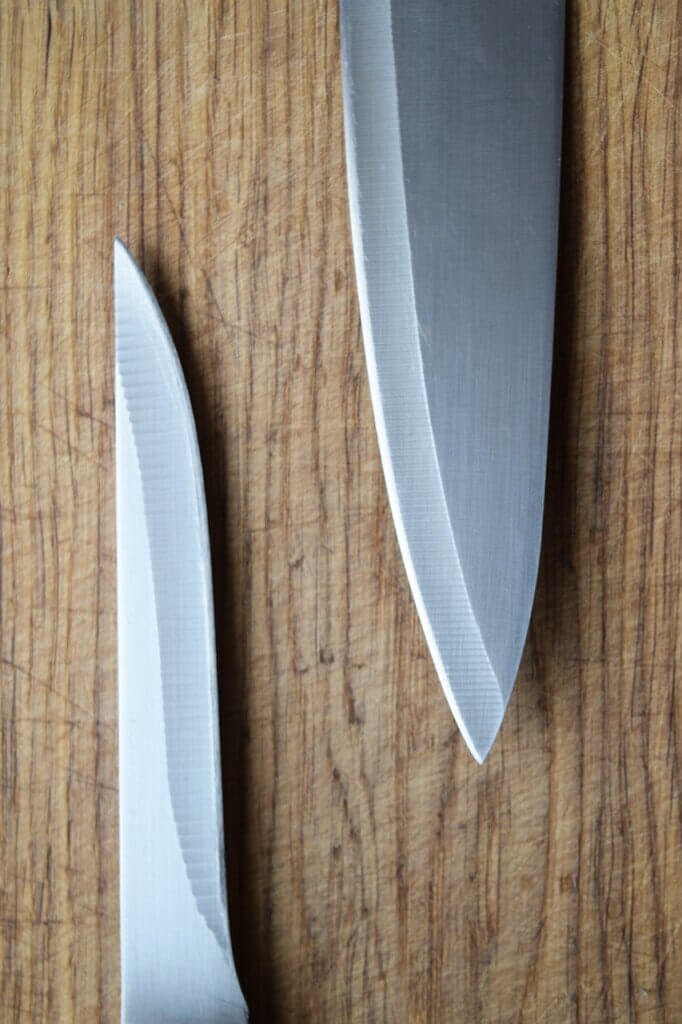
Blade Length
8-inch Blade
An 8-inch blade is the most common and versatile size for a chef’s knife. This length provides ample room for slicing, dicing, and chopping a wide range of ingredients while offering a good balance between maneuverability and cutting power.
6-inch Blade
A 6-inch blade is a slightly smaller size, offering increased maneuverability and precision. This size is ideal for those with smaller hands or those who prefer a lighter knife. A 6-inch blade is great for tasks that require more finesse, such as mincing herbs and slicing smaller fruits and vegetables.
10-inch Blade
For those who prefer a larger knife and have the space to accommodate it, a 10-inch blade provides maximum cutting power and leverage. This size is excellent for tasks that require a long, sweeping motion, such as slicing large cuts of meat or large fruits and vegetables.
7-inch Blade
A 7-inch blade is a versatile option that falls between the 6-inch and 8-inch sizes. It offers a good balance of maneuverability and cutting surface, making it suitable for a variety of tasks, from slicing to dicing and chopping.
9-inch Blade
Similar to the 10-inch blade, a 9-inch blade provides added cutting power and leverage. This size is ideal for those who prefer a larger knife but don’t necessarily need the full length of a 10-inch blade. A 9-inch blade is great for slicing meat, fish, and large vegetables.
Handle Design
Full Tang Handle
A full tang handle refers to a knife where the blade extends all the way to the end of the handle, offering maximum strength and stability. This design provides excellent balance and control, making it a preferred choice for professional chefs and serious home cooks.
Forged Handle
Forged handles are made by heating a solid piece of metal and shaping it into the desired handle design. This construction technique results in a sturdy and durable handle that can withstand heavy use. The weight and balance of a forged handle contribute to the overall feel and control of the knife.
Stamped Handle
Stamped handles are created by cutting the handle shape from a flat sheet of metal. This manufacturing technique produces lighter knives with less heft. Stamped handle knives are generally more affordable and suitable for everyday kitchen tasks that do not require heavy-duty use.
Ergonomic Handle
Ergonomic handles are designed with the user’s comfort and safety in mind. These handles are contoured to fit comfortably in the hand, reducing fatigue and providing a secure grip during extended use. They often feature materials with non-slip properties, such as rubber or textured synthetics, further enhancing control and preventing accidents.
Wooden Handle
Wooden handles offer a classic and timeless aesthetic to kitchen knives. They provide a warm and comfortable grip, and their natural variations make each handle unique. Wooden handles require some maintenance, such as occasional oiling, to keep them in optimal condition. It is essential to avoid prolonged exposure to water to prevent swelling and cracking.
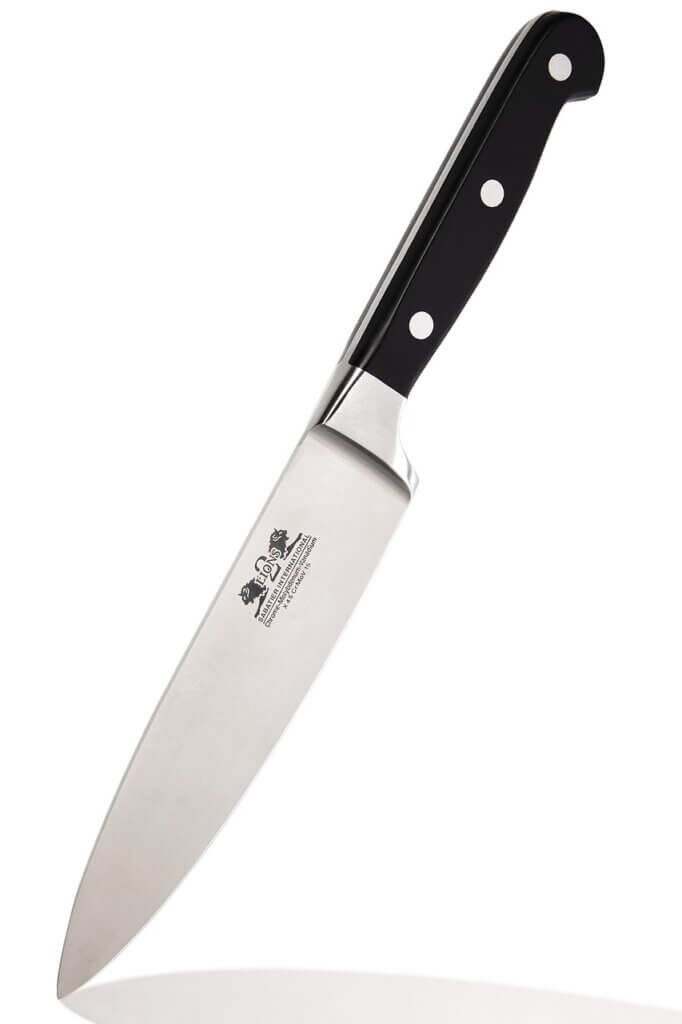
Weight and Balance
Heavyweight Knives
Heavyweight knives, as the name suggests, have a significant weight to them. This extra weight provides additional cutting power and stability, making them ideal for tasks that require more force. Professional chefs often prefer heavyweight knives for their ability to handle tough cutting jobs with ease.
Lightweight Knives
Lightweight knives are lighter and more agile, making them suitable for precision tasks that require finesse and delicate handling. These knives are less fatiguing to use for extended periods and offer excellent control. Home cooks, especially those with smaller hands, often appreciate the maneuverability of lightweight knives.
Balanced Knives
Balanced knives provide the perfect combination of weight distribution throughout the knife. These knives have the right amount of heft in the blade and handle, allowing for easy maneuverability and precise control. Balanced knives offer a comfortable and effortless cutting experience, making them versatile tools for a range of kitchen tasks.
Sharpness and Edge Retention
High Carbon Steel Blades
High carbon steel blades are renowned for their ability to achieve exceptional sharpness and maintain that sharp edge for extended periods. These blades can be honed to a fine edge, allowing for effortless and precise cuts. However, high carbon steel blades require regular maintenance to prevent rust and staining.
Japanese Style Blades
Japanese-style blades, such as those found in Santoku knives, are known for their razor-sharp edges and excellent cutting performance. These blades are typically made from high carbon steel and are ground to a very thin, acute bevel. Japanese-style blades excel at precision tasks like chopping and mincing with their fine edges, ensuring clean cuts without crushing delicate ingredients.
Honed Edges
A honed edge refers to a blade that has been finely sharpened, typically using a honing steel or sharpening stone. Honing helps maintain the edge of the blade by realigning the microscopic teeth created during use. Regular honing keeps your knife performing at its best and enhances its cutting efficiency.

Durability and Maintenance
Stainless Steel Blades
Stainless steel blades are highly durable and resistant to corrosion, making them easy to maintain. These blades require minimal care and are often dishwasher safe, offering convenience for busy kitchens. Stainless steel blades are an excellent choice for those seeking low-maintenance knives that can withstand everyday use.
Dishwasher Safe Knives
Dishwasher safe knives are designed to withstand the heat and water pressure of a dishwasher without being damaged. These knives often have a stainless steel blade and handle, making them easy to clean and ready for the next use. While dishwasher safe knives offer convenience, it is important to note that hand washing is still recommended to preserve the knife’s longevity.
Hand Wash Only Knives
Some knives require hand washing to preserve their integrity and performance. These knives may have specialized materials like wood or intricate designs that are susceptible to damage in a dishwasher. Hand washing allows for careful cleaning and drying, ensuring the longevity and optimal performance of these knives.
Knife Sharpening
Regular knife sharpening is essential to maintain the sharpness and cutting performance of your kitchen knives. There are various methods available, including using sharpening stones, honing steels, or electric sharpeners. Knowing how to sharpen your knives properly will ensure that your blades always have a keen edge for precise chopping and mincing.
Price Range
Budget Knives
Budget knives offer an affordable option for those starting their culinary journey or those looking for reliable knives without breaking the bank. These knives often feature stainless steel blades and basic handle designs. While they may not offer the same level of performance and longevity as higher-end knives, budget knives can still provide satisfactory results in the kitchen.
Mid-Range Knives
Mid-range knives strike a balance between price and quality, offering a step up in performance and durability compared to budget options. These knives often feature higher-grade materials like carbon steel or high carbon stainless steel, providing better sharpness and edge retention. Mid-range knives are suitable for home cooks seeking reliable tools for precision cutting tasks.
High-End Knives
High-end knives are crafted with meticulous attention to detail and often feature premium materials and craftsmanship. These knives offer exceptional sharpness, durability, and ergonomics, providing a truly luxurious experience in the kitchen. Proficient chefs and knife enthusiasts who seek the finest tools for precision chopping and mincing will appreciate the quality and performance of high-end knives.

Brand Recommendations
Wusthof
Wusthof is a renowned brand that has been producing high-quality kitchen knives for over 200 years. Their knives are known for their exceptional craftsmanship, sharpness, and durability. With a wide range of options, Wusthof offers knives suitable for both amateur cooks and professional chefs alike.
Shun
Shun is a leading Japanese brand that combines traditional craftsmanship with modern technology to create knives of exceptional quality and style. Their knives are highly regarded for their sharpness, edge retention, and stunning aesthetics. Shun knives are sought after by both professional chefs and knife enthusiasts worldwide.
Victorinox
Victorinox is recognized for its Swiss Army knives, but they also produce high-quality kitchen knives. Known for their durability and affordability, Victorinox knives are a popular choice for both home cooks and professional chefs. Their knives offer reliable performance and excellent value for money.
Global
Global is a Japanese brand famous for its sleek and modern designs. These knives feature a unique construction, with the blade and handle made from a single piece of stainless steel. Global knives are highly appreciated for their sharpness, balance, and ease of use.
Miyabi
Miyabi is a brand that combines Japanese traditional knife-making techniques with German engineering. The result is exceptional knives that merge the best of both worlds. Miyabi knives are known for their outstanding sharpness, elegant designs, and attention to detail. They are the perfect choice for those who appreciate the precision and artistry of Japanese cutlery.
Considerations for Precision Chopping and Mincing
Blade Sharpness
Achieving precise cuts requires a razor-sharp knife. Look for blades made from high-quality steel that can maintain a sharp edge over time. Regular honing and sharpening are necessary to ensure your knife is always ready for precision chopping and mincing tasks.
Weight and Balance
Comfortable handling and balance play a crucial role in precision cutting. Choose a knife that feels balanced in your hand and suits your cutting technique. Lightweight knives offer greater agility and ease of control, while heavyweight knives provide more cutting power and stability.
Comfortable Handle
A comfortable handle allows for extended periods of chopping and mincing without straining your hand or wrist. Look for a handle design that ergonomically fits your hand size and provides a secure grip. Non-slip materials can further enhance safety and control during precision cutting tasks.
Blade Flexibility
For precision chopping and mincing, a knife with some flexibility can be advantageous. A slightly flexible blade allows you to navigate the contours of food items and maintain a consistent cutting rhythm. However, it’s essential to strike a balance, as too much flexibility may compromise cutting power.
Precision Cutting Techniques
Mastering precision cutting techniques is essential for achieving professional-level results. Proper knife handling, such as the pinch grip, ensures optimal control and precision in each cut. Learning different cuts, such as julienne or chiffonade, will further enhance your culinary skills and presentation.
In conclusion, selecting the best kitchen knives for precision chopping and mincing involves considering factors such as blade type, material, length, handle design, weight and balance, sharpness and edge retention, durability and maintenance requirements, price range, brand reputation, and personal preferences. By understanding the characteristics and differences of various kitchen knives, you can confidently choose the tools that will elevate your culinary skills and help you achieve precise and beautiful cuts in the kitchen.
